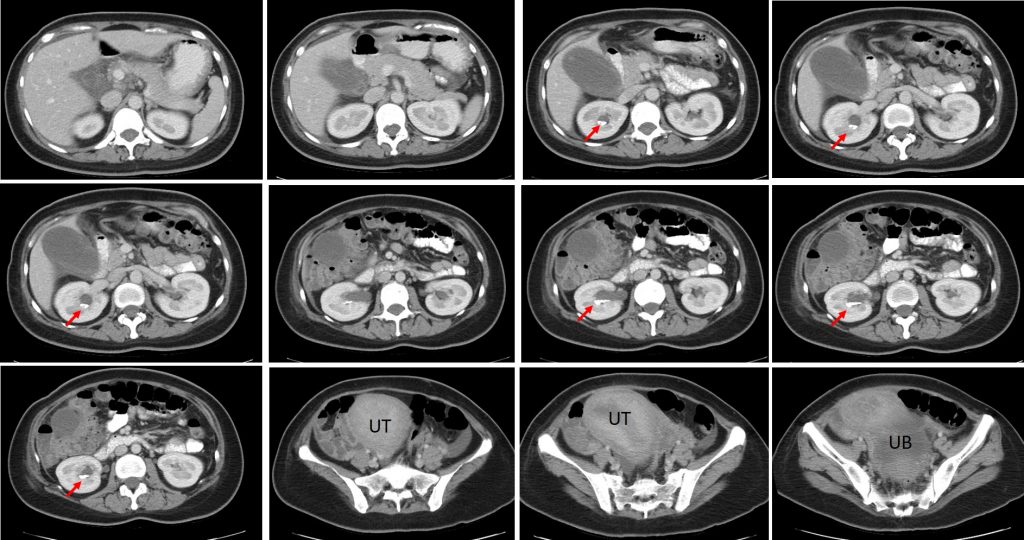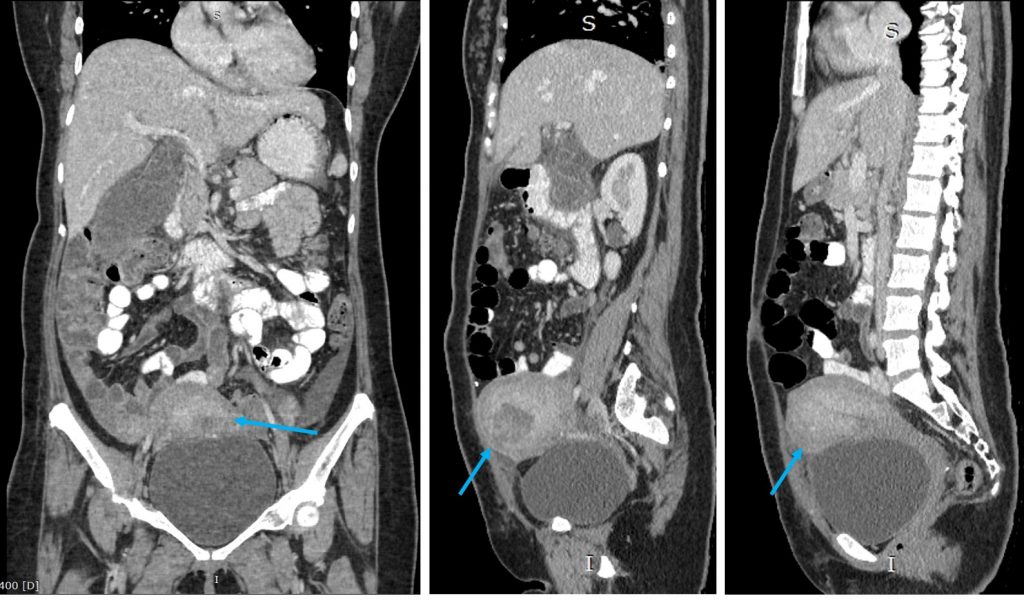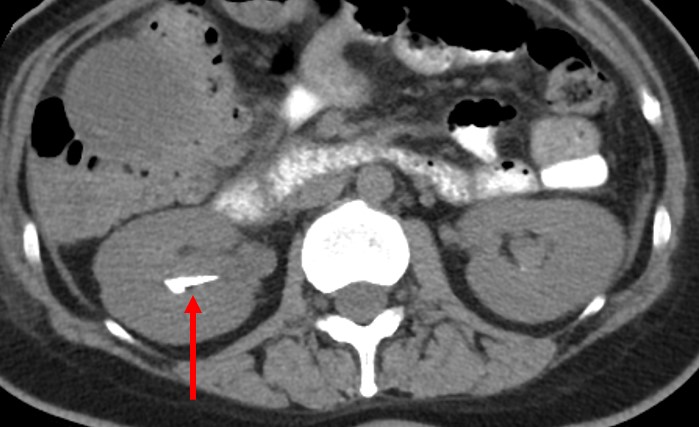Case contribution: Dr Radhiana Binti Hassan
Clinical:
- A 33 years old female
- Day 19 post LSCS, presented with abdominal pain
- No hematuria, no fever
- Ultrasound shows no abdominal collection
- Incidental finding of right renal calculi



CT scan findings:
- Acalculus cholecystitis as the cause of current presentation
- Other findings: Post operative uterus (blue arrows)
- There are multiple hyperdense foci in the pelvicalyceal system of right kidney (arrows) involving the upper, lower and interpolar.
- These hyperdense foci are seen layered at its dependant part.
- A small calculus is also seen in the left lower pole. Otherwise there is no hydronephrosis bilaterally.
- No ureteric calculus is seen.
- Urinary bladder is well distended.
Diagnosis: renal milk of calcium
Discussion:
- Milk of calcium is a viscous colloidal suspension of calcium carbonate, calcium phosphate, calcium oxalate and occasionally ammonium phosphate.
- These are seen in patients with calyceal diverticulum or in patients with multiple radiodense levels of milk of calcium in hydronephrotic kidney.
- The etiology is uncertain but obstruction and inflammation seems to be the key factors.
- Obstruction and stagnation of urine possibly result in super saturation of calcium salts resulting in the formation of calcium microliths. Due to a disturbance in stone forming and inhibiting factors a dynamic equilibrium probably results, preventing the aggregation of the microliths. Why the microliths do not increase in size and form a stone remains unexplained.
- The importance of MOC recognition is to avoid unnecessary procedures like ESWL or PCNLs or any other unwarranted interventions.
- A non-contrast CT scan is able to demonstrate the layers of calcified material in the dependant portion of the calyceal system with characteristic postural change on supine and prone positions.
